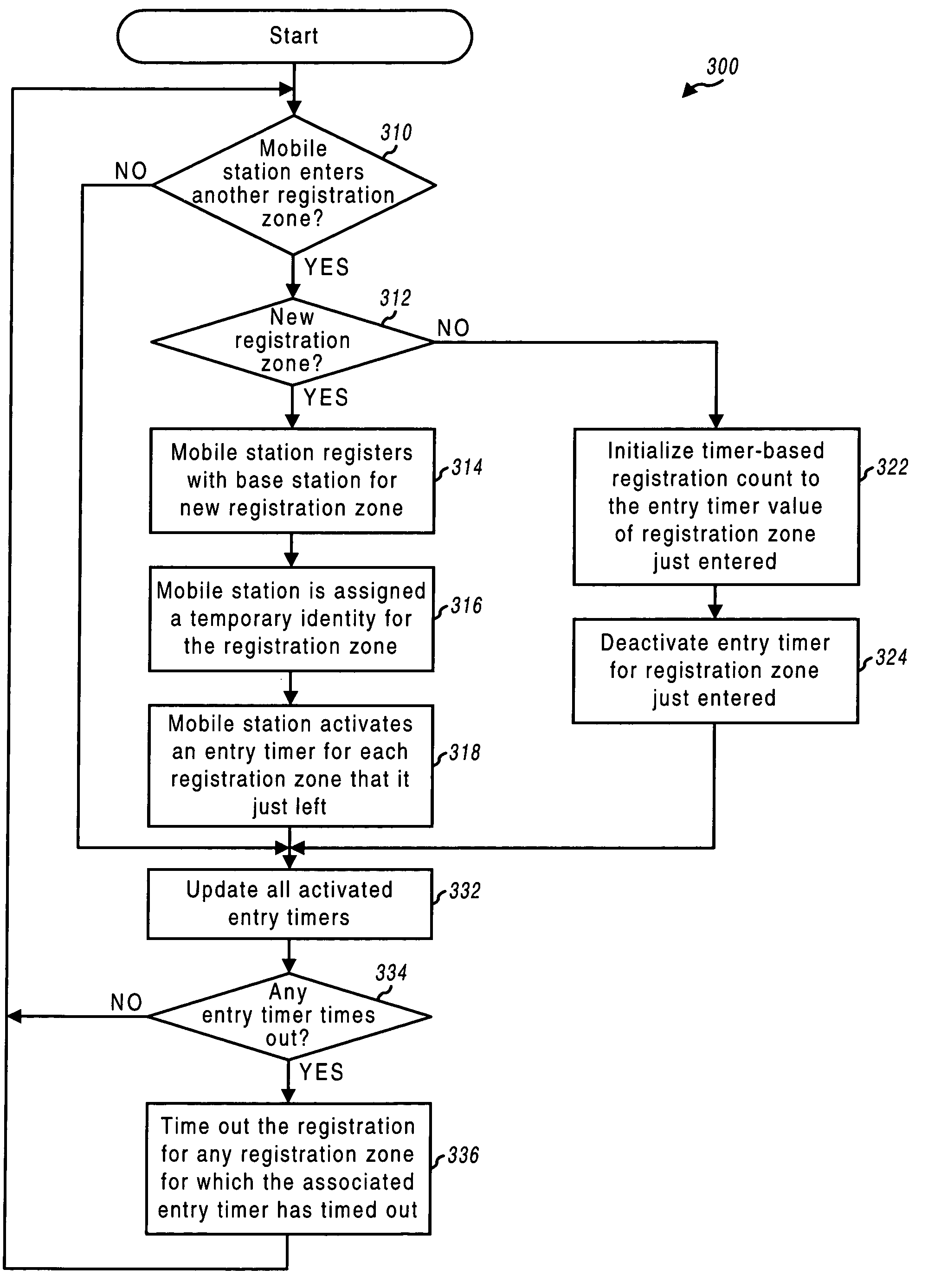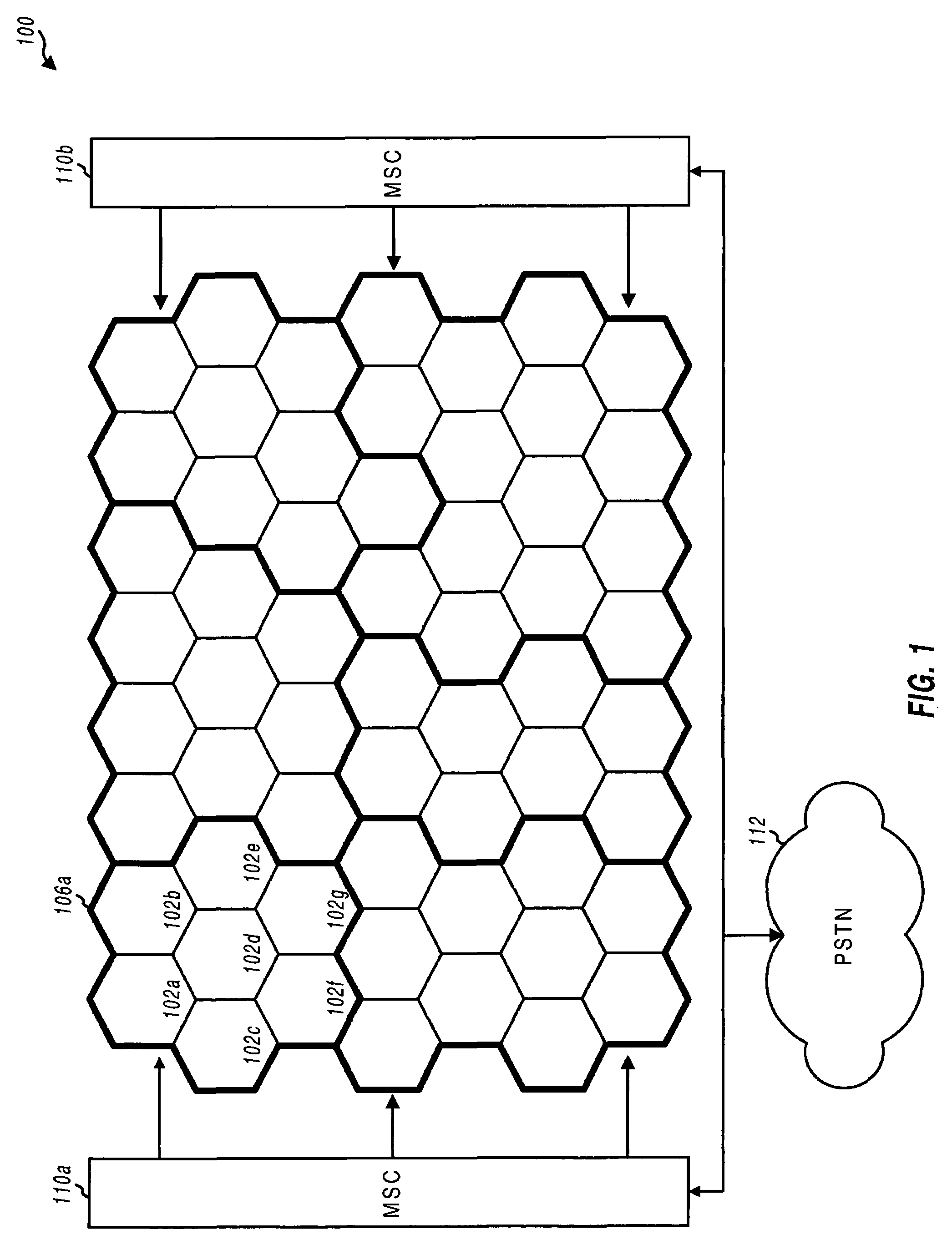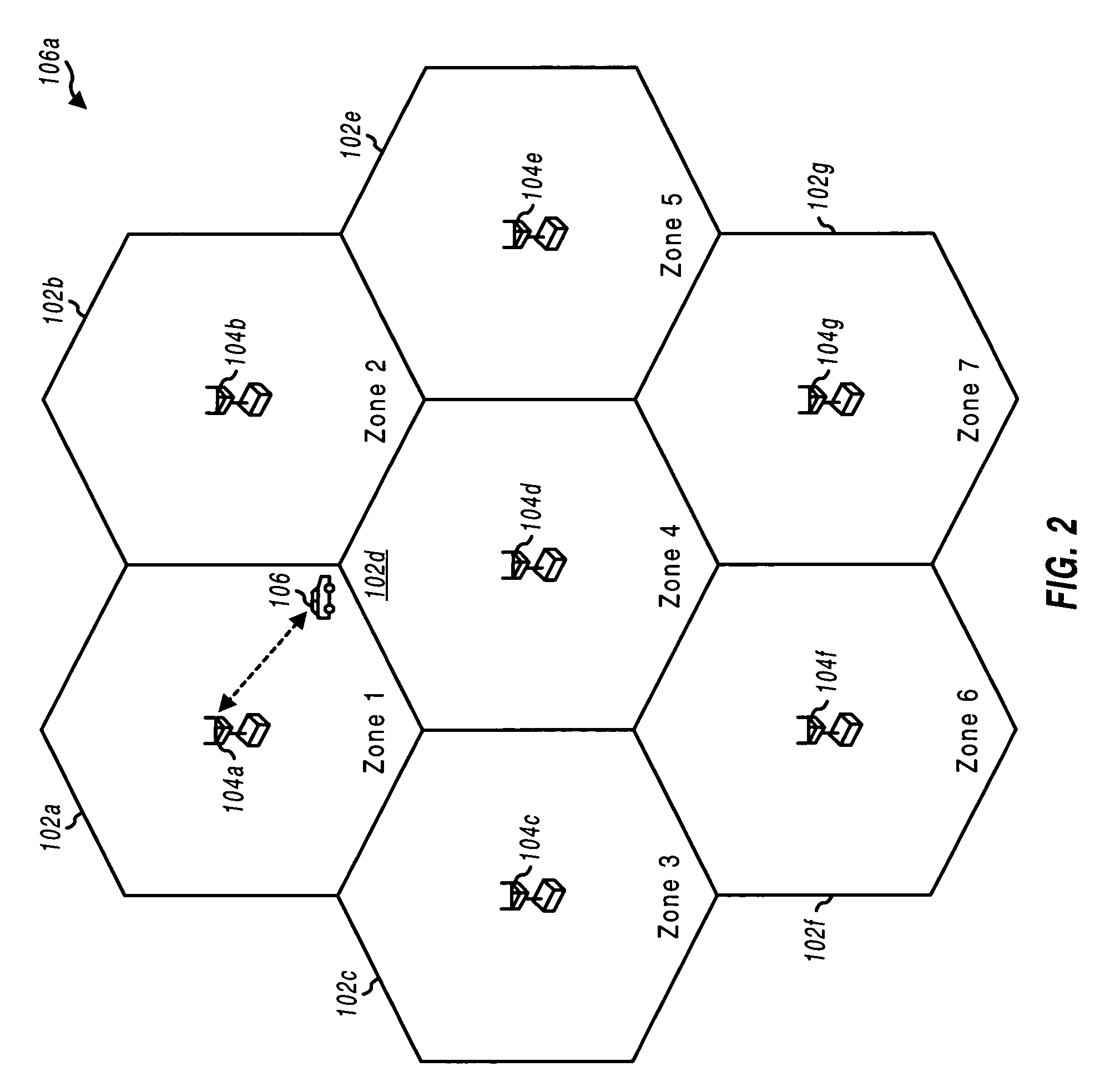Method for performing RR-level registration in a wireless communication system
a wireless communication system and rr-level technology, applied in the field of data communication, can solve the problems of large communication resources to support system wide paging in a large system, small period of inactivity, and additional overhead, and achieve the effect of reducing the amount of registration, reducing or eliminating the effect of ping pong
- Summary
- Abstract
- Description
- Claims
- Application Information
AI Technical Summary
Benefits of technology
Problems solved by technology
Method used
Image
Examples
Embodiment Construction
[0022]In a wireless communication system, a registration scheme is typically employed to track the location and status of the mobile stations in the system. Without this knowledge, directing information toward a particular mobile station would require a page intended solely for the particular mobile station to be broadcast over all areas in some universal format to ensure that the mobile station is contacted. Using registration, the mobile station can inform a system entity (e.g., a mobile switching center (MSC) or a base station) of its location and status. The receiving entity records this information in a database for subsequent communication with the mobile station. For example, if the system has a message for the mobile station, the database can be accessed to determine which base station(s) and format can be used to send the message to the recipient mobile station.
[0023]The registration techniques described herein can be advantageously used in various wireless communication sy...
PUM
 Login to View More
Login to View More Abstract
Description
Claims
Application Information
 Login to View More
Login to View More - R&D
- Intellectual Property
- Life Sciences
- Materials
- Tech Scout
- Unparalleled Data Quality
- Higher Quality Content
- 60% Fewer Hallucinations
Browse by: Latest US Patents, China's latest patents, Technical Efficacy Thesaurus, Application Domain, Technology Topic, Popular Technical Reports.
© 2025 PatSnap. All rights reserved.Legal|Privacy policy|Modern Slavery Act Transparency Statement|Sitemap|About US| Contact US: help@patsnap.com



